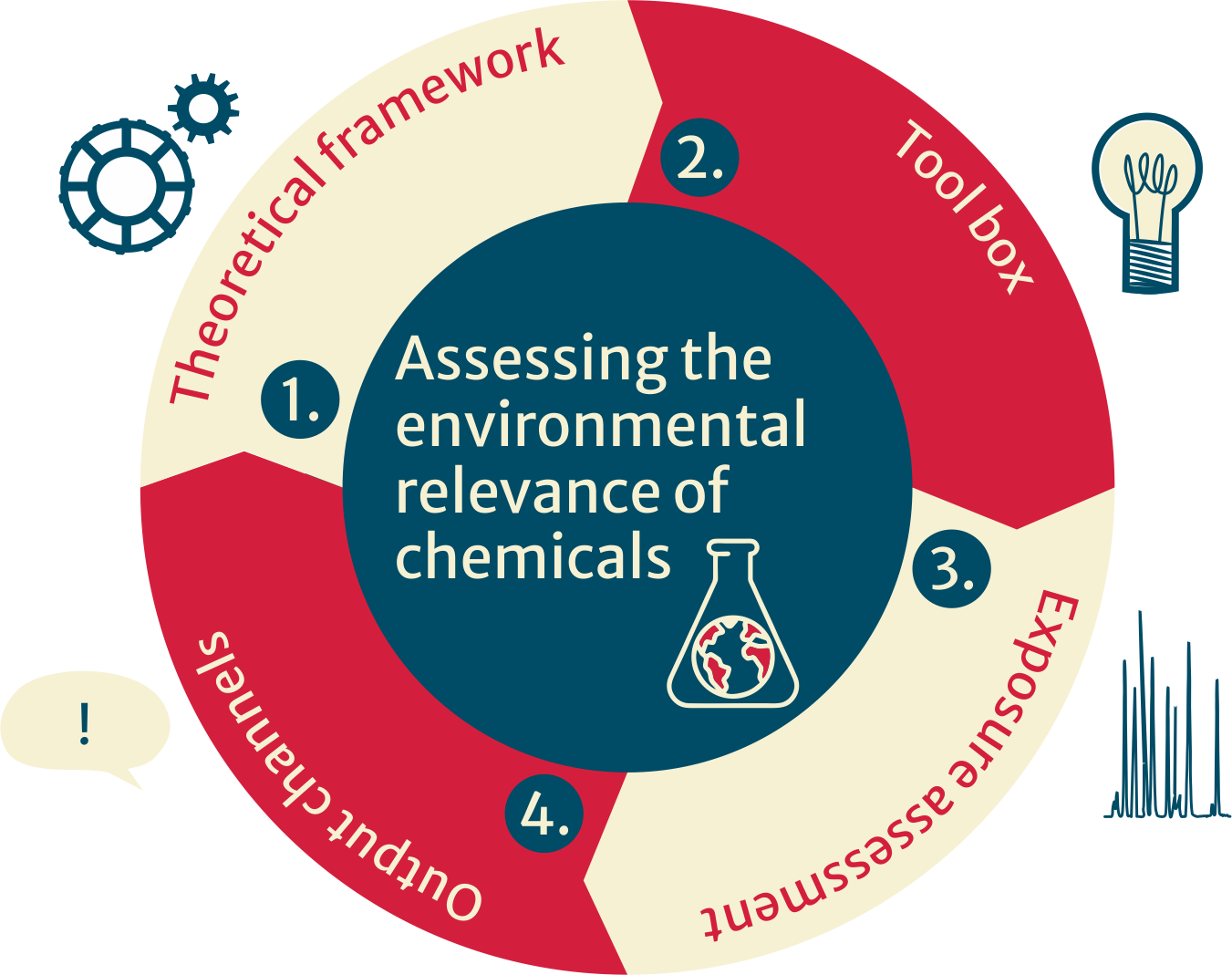
The partitioning and fate of environmental chemicals are governed by their physico-chemical properties (solubility, reactivity,…) and the gradient in chemical activity of the chemicals between different environmental compartments.
The goal is to characterize the environmental behavior of relevant organic chemicals, including those associated with anthropogenic particles such as microplastics. Within our focus on biota we determine the totality of the chemical exposure of diverse species, their so-called exposome.
The activities hence focus on four research areas:
1. The factors governing the environmental fate of chemicals, including partitioning, reactivity, biotransformation, bioaccumulation and models to predict chemical behavior in organisms and abiotic environmental compartments,
2. The methodological tool box covering innovative formats of passive samplers to extract chemicals from abiotic and biotic media and conceptual approaches for novel target analytics and reactivity assays,
3. The investigation of environmental chemicals in abiotic, natural and anthropogenic media incl. plastics and the determination of the exposure of environmental biota (amongst others marine and terrestrial mammals) and humans to mixtures of organic chemicals, and
4. The target group-focused outreach of the obtained research outcomes to stakeholders and the public.
